“My opinions on nuclear technology and nuclear power have changed drastically over the decades. I used to be an anti-nuclear leader.” Brice Lalonde headed the French branch of the Friends of the Earth organisation, created by and for anti-nuclear activism. In 1973, he was arrested by the French navy on board a ship attempting to block his country’s atomic tests in Polynesia. In later years, he became environment minister under President François Mitterrand and founded one of France’s four environmentalist parties. But as he told Nature magazine in September 2022, his perspective changed in 1988 with the creation of the UN Intergovernmental Panel on Climate Change (IPCC). Like him, many people today argue that an energy source without greenhouse gas (GHG) emissions can be an ally to help break the dependence on fossil fuels. Many people, but not all.
From 1954, when the Soviet Union commissioned the Obninsk nuclear power plant, the first to be connected to the electricity grid, this energy source embarked on an explosive expansion that continued until the beginning of the 21st century, despite a turbulent history of nuclear incidents and accidents. The earliest ones, in the USSR and the United Kingdom, occurred only three years after that first Soviet power plant was switched on. Then came Three Mile Island in the USA (1979) and Chernobyl in Ukraine (1986), but not even the massive catastrophe of the latter could deflate the growth of nuclear power. This did happen after the Fukushima disaster in Japan in 2011, but it was only temporary; although the second most serious accident in history led the following year to the biggest drop in production since this technology has existed, and even to the rethinking of energy policy in several countries, it bounced back in 2013.
Nuclear power plants in the spotlight
Today, the 448 nuclear reactors in 32 countries generate 10% of global electricity, or 4% of the energy mix if transport and heating are included. The USA is the leading power in terms of number of reactors, with 96 in operation, accounting for 31% of the world’s nuclear power generation. China is next in terms of production with 13.5%, but its 50 reactors are less than France’s 58, which accounts for 13.3% of the global total. Activist Lalonde’s country is most committed to nuclear energy, which supplies 70% of its electricity.
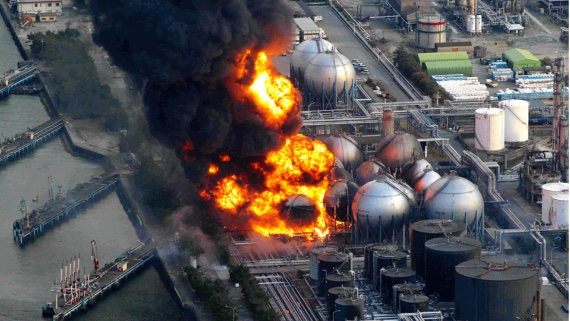
In the European Union, nuclear power plants operating in 13 countries provide almost a quarter of total electricity, although generation has fallen by 25% since 2006. This decline is largely due to Germany, which is in the process of shutting down all its nuclear plants, as Italy did in 1990. In countries such as Austria and Denmark, nuclear power is outlawed, while others have initiated processes to reduce or abandon it. But while nuclear power has generally been on the decline in the EU, Russia’s invasion of Ukraine has helped to cool plans to dispense with nuclear power entirely.
Leaving aside the supervening geopolitical uncertainty introduced by the Russo-Ukrainian War, the most important factor in recent years behind the questioning of the abandonment of nuclear energy has been its potential to help decarbonise energy production in order to achieve the goals of the 2015 Paris agreement, limiting global warming to a maximum of 1.5°C. Before climate change became a global emergency, the entire environmental movement and much of the scientific community advocated abandoning this form of energy, which biologist Paul Ehrlich, author of the population botmb theory, said in 1975 was “the equivalent of giving an idiot child a machine gun.”
The upturn in support for nuclear power
Everything began to change when, in 1988, climatologist James Hansen’s testimony to the US Congress made it impossible to ignore any longer that GHGs produced by burning fossil fuels were increasing the planet’s temperature. And as Lalonde has written, the early IPCC reports “made it clear that the biggest and most important environmental challenge was climate change and not necessarily the management of nuclear waste.” As the century drew to a close, the nuclear debate was reignited, as leading environmentalists such as Stewart Brand, James Lovelock (proponent of the Gaia hypothesis) and Thomas Lovejoy (the father of biodiversity science) began to favour this energy option to combat climate change.
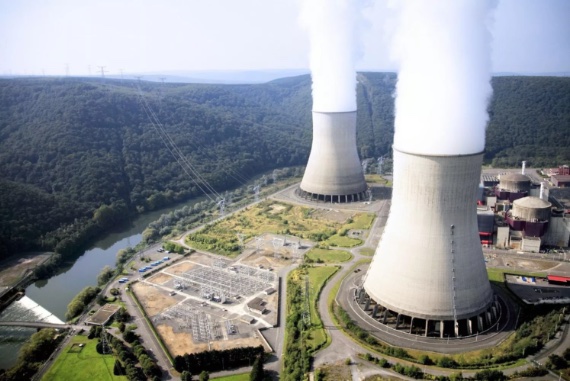
An influential milestone was a study published in 2013 by Hansen and his colleague Pushker Kharecha, then both at NASA’s Goddard Institute. The two scientists estimated that over the past 40 years the use of nuclear power to replace fossil fuels had prevented 1.8 million deaths from air pollution and the emission of 64 billion tonnes of CO2 equivalent. By mid-century, they added, it could prevent up to seven million more deaths and up to 240 billion tonnes of CO2.
Thus, nuclear energy has gained endorsements that even its most enthusiastic advocates would not have dreamed of decades ago. In 2022, the European Parliament approved its classification as green energy. Worldwide, more than 50 reactors are under construction, and 30 countries are considering plans for new nuclear plants. Japan, Belgium, Sweden, Spain, South Korea and even Germany itself have more or less rethought their denuclearisation plans, and support for nuclear power has grown in the world’s leading power, the USA.
Even climate activist Greta Thunberg, who had spoken out against the European Parliament’s decision, has surprised many by advocating the continuation of German nuclear power plants if the alternative is burning coal. According to the Director-General of the United Nations International Atomic Energy Agency (IAEA), Rafael Mariano Grossi, experts from the IAEA, the International Energy Agency and the IPCC agree that reaching the goal of net-zero emissions will require a doubling of nuclear capacity.
The problem of nuclear waste
Not so fast, say others. No one, of course, is unaware of the problem of nuclear waste. The environmental organisation Greenpeace, which has not changed its opposition to nuclear power, calls the nuclear waste problem a “global crisis“. According to this NGO, a total of almost a quarter of a million tonnes of highly radioactive spent fuel, mostly uranium-238 (the material used in the chain reaction is uranium-235), has piled up in 14 countries. But this is not the only type of waste: there is also the discarded materials (tailings) from uranium mining and production, totalling almost 2.4 billion tonnes, plus some two million tonnes of depleted uranium (with a low proportion of the isotope 235) generated during enrichment.
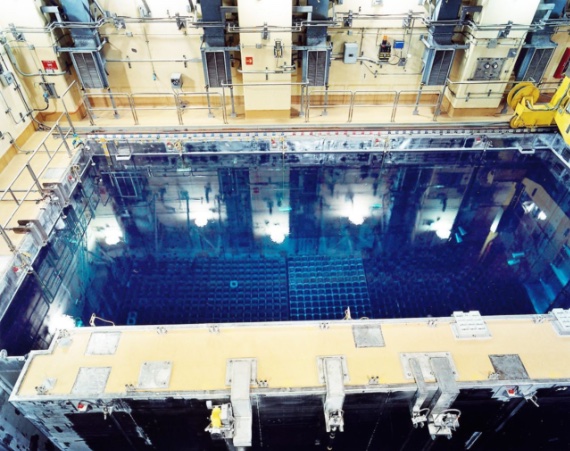
In the words of Shaun Burnie of Greenpeace Germany, “not a single country can claim that it has the solution to manage the most dangerous radioactive wastes.” Several storage facilities, the NGO argues, are on the verge of saturation, and spent fuel sitting in the power plants is at risk of overheating, sometimes without emergency generators for cooling. Deep geological disposal is not a credible option for Greenpeace. The World Nuclear Waste Report agrees that, apart from the current construction of a permanent repository in Finland (see box), there is still no real solution for the waste. It points out that it is even difficult to quantify global nuclear waste, as various countries apply different definitions.
For its part, the IAEA takes a more optimistic view. In its 2022 report it claims that “there is significant progress in the safe and effective management of radioactive waste […], including the development of deep geological repositories,” stating that 95% of all existing waste is of low or very low radioactivity, that only 1% is high level, and that 80% of all solid waste is in safe and sustainable final storage. The deep geological repository in Finland will start operating soon, and other projects are well advanced in Canada, France, Sweden and Switzerland.
Carbon footprint and other nuclear risks
But waste is not the only objection of some experts to this new “nuclear gold rush.” Although electricity production itself does not emit GHGs, the rest of the associated processes do. According to the list compiled by sustainability expert Manfred Lenzen of the University of Sydney, GHGs are emitted in all the stages of the nuclear power cycle: uranium mining and milling, conversion of ore to uranium hexafluoride, enrichment, fuel fabrication, reactor construction and decommissioning, fuel reprocessing, waste management, rehabilitation of mining sites, and transport throughout all stages.
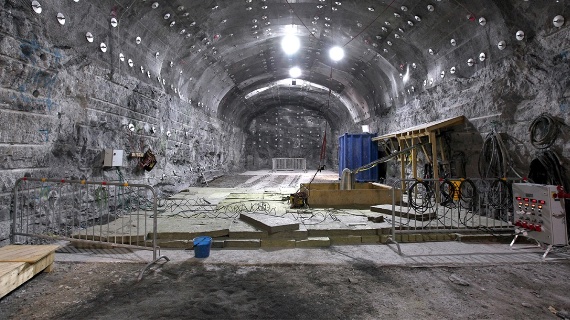
Overall, and although the different calculations offer very different figures, most of them assign considerably lower emissions to the life cycle of nuclear energy than those of fossil fuels; the IPCC places them in the same range as some renewables, such as solar or wind power. Lenzen’s review of various estimates suggests an average figure of 65 grams of CO2 per kilowatt-hour, similar to wind power, while gas and coal produce 450 and 900 grams, respectively, to generate the same energy.
Other experts point to an additional risk caused by climate change itself. According to energy expert Paul Dorfman of University College London, two out of five power plants operate on the coast because of the need for cooling water, and at least a hundred are only a few metres above sea level. As the oceans rise due to global warming, their safety could be compromised; although the Fukushima disaster was caused by an earthquake, it was a good illustration of what happens when a nuclear power plant is flooded. Inland power plants are also at risk, in this case because of the opposite, the risk of drought in the watercourses that provide cooling water. Perhaps science and technology will eventually solve the major hurdles of nuclear power (see box), but they will hardly put an end to a controversy that continues to rage.
Nuclear power of the future
Nuclear technology has progressed significantly since the first power plants were built in the 1950s and 1960s, but it is not simple to upgrade existing installations. For example, all the nuclear plants in Spain belong to the second generation of reactors. Successive generations, III and III+, added progressive improvements based on the same principles, with advances such as dispensing with the need for external electricity. But today the focus is on the fourth generation, which has tried to wipe the slate clean as far as possible in order to propose new designs based on criteria of sustainability, cost effectiveness, safety and reliability.
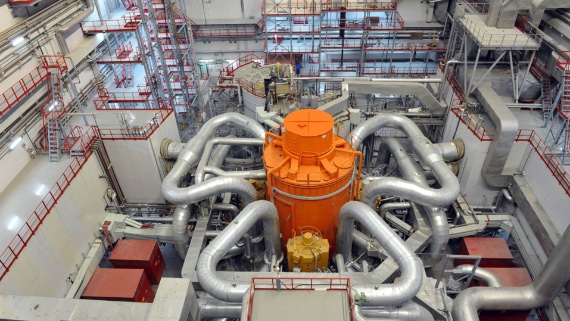
The sodium-cooled fast reactor can consume current waste as fuel in a closed cycle. Credit: ROSENERGOATOM
Specifically, this new generation of nuclear plants envisioned for the coming decades includes six new proposals. The most advanced is the sodium-cooled fast reactor, which can consume current waste as fuel in a closed cycle. Two such commercial reactors are already operating in Russia. Some experts see safety advantages in another design, the molten salt reactor, which uses molten salt as a coolant and even as fuel. Other options are the gas-cooled fast reactor, the very-high-temperature reactor, the supercritical water-cooled reactor and the lead-cooled fast reactor. Some of these can be adapted to the production of hydrogen, a fuel on the rise.
These options also include the manufacture of small modular reactors that can be assembled in a factory and transported to the site of operation, with an output of up to 300 megawatts, a third of current reactors. Even 10 megawatt micro-reactors are being considered for remote or off-grid areas. More than 70 commercial designs for small reactors are currently under development.
In terms of waste management, Finland is currently the only country that has managed to bring to fruition a project where others have failed, the construction of a deep geological repository for the final disposal of nuclear waste. Half a kilometre underground on the Baltic coast, next to the Olkiluoto nuclear power plant, the Onkalo repository will have the capacity to hold all the spent nuclear fuel generated in the country’s power plants for 100 years before final sealing. With the recent addition of a new reactor to the four already operating in the country, Finland now gets more than 40% of its electricity from nuclear power. The repository will start operating in 2024-25. Other countries continue to consider deep storage projects, but none of them have yet materialised due to the fears they arouse.
Javier Yanes
Comments on this publication